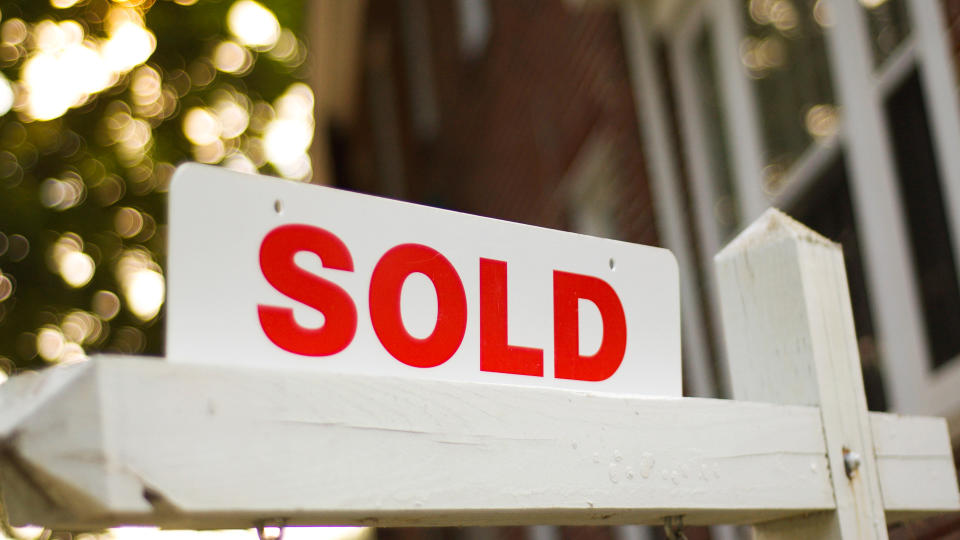Here’s What the Housing Market May Look Like in 2030

The housing market has made headline news over the past two years, with countless buyers being priced out of the market. Not only have home prices exploded by as much as 50% in some areas, interest rates have more than doubled off their 2020 lows. This has made housing unaffordable for countless buyers, as the combination of rising prices and interest rates have made the average house payment jump by more than 30%.
Explore: GOBankingRates’ Best Credit Cards for 2023
Related: 3 Things You Must Do When Your Savings Reach $50,000
Take Our Poll: How Do You Think the Economy Will Perform in 2023?
This may not seem to be the right time to be looking ahead to where the housing market will be in 10 years, but the truth is that people will always need a place to live. Knowledge is power when it comes to making financial decisions, so here’s a look at what some experts say the housing market will look like in eight years.
Prices Will Be Much Higher
It’s almost a given that in spite of current high prices, houses will cost even more 10 years down the line. According to RenoFi, the cost of a single-family home in the U.S. is likely to hit $382,000 by 2030.
In the near term, even though price growth seems to be slowing, the fact remains that America still faces a shortage of available homes. While rising mortgage rates will likely reduce price growth in the near term, the scales are still tilted toward demand over supply. This imbalance is likely to last at least another year, and possibly two or three, until the combination of rising new builds, higher interest rates and slower investor interest remove some of the demand for homes.
Especially in California
Quoting the “average” price of a home in the United States doesn’t always provide buyers with information that is relevant. Real estate pricing is always highly regional, and it really does come down to “location, location, location.” If you live in California, the so-called “average” home hasn’t seen $382,000 in decades.
RenoFi projects that by 2030, for example, San Francisco will have the highest average home value in the country, at a whopping $2,612,484. Two other California cities, San Jose and Oakland, expect to price out at $2,251,703 and $1,713,554, respectively.
Take Our Poll: How Do You Think the Economy Will Perform in 2023?
Save as Much as You Can
Regardless of how high prices seem like they will be down the line, the advice for those looking to buy remains the same as it always has: Save as much as you can. The biggest burden for most homebuyers is not so much the monthly mortgage payment but coming up with enough money for a down payment.
If the average home price across America will be $382,000 by 2030, potential homebuyers should be trying to save up a 20% down payment of $76,400 over the next eight years. On a straight scale, not factoring in inflation or any investment gains, that means you’ll need to save $795.83 per month. Of course, if you live in a high-cost area you’ll have to save more, but this is a good guideline as to the amount of savings you’ll need for the average home.
Invest Your Savings
To make your journey toward reaching your down payment target easier, the best thing to do with your savings is to invest them. If you could achieve a modest 4% annual return on your money over the next eight years, you’d only need to save about $675 per month, as opposed to $795.83. And if you could earn a 5% return on your investment, your monthly required savings would drop to about $650.
Price Gains and Inflation
Although these price gains may seem astronomical, over a period of eight years, they are more or less expected to keep pace with inflation. When viewed in that light, those price gains are not only normal but relatively modest. This is why investing your savings for a future home purchase can actually give you a substantial leg up.
With prudent investing, your savings could easily outpace the gains in inflation. This means that even though prices are going up while you’re waiting, you’re actually reducing the effective cost of your purchase by increasing the value of your investments.
Is There Still Time To Buy?
If you’re trying to flip a house or looking to move somewhere else within the next two years, you might want to hold off on buying a home for the time being. But if you’re either a long-term investor or plan to reside in one location for 10 years or more, you’re likely still in the clear if you’re looking to buy.
Although prices currently seem high, experts project they will be even higher eight years down the road. While mortgage rates have ticked up rapidly in 2022, they are still trending below long-term averages — and if they fall over the coming years, you’ll have the option to refinance at a lower rate.
More From GOBankingRates
This article originally appeared on GOBankingRates.com: Here’s What the Housing Market May Look Like in 2030
